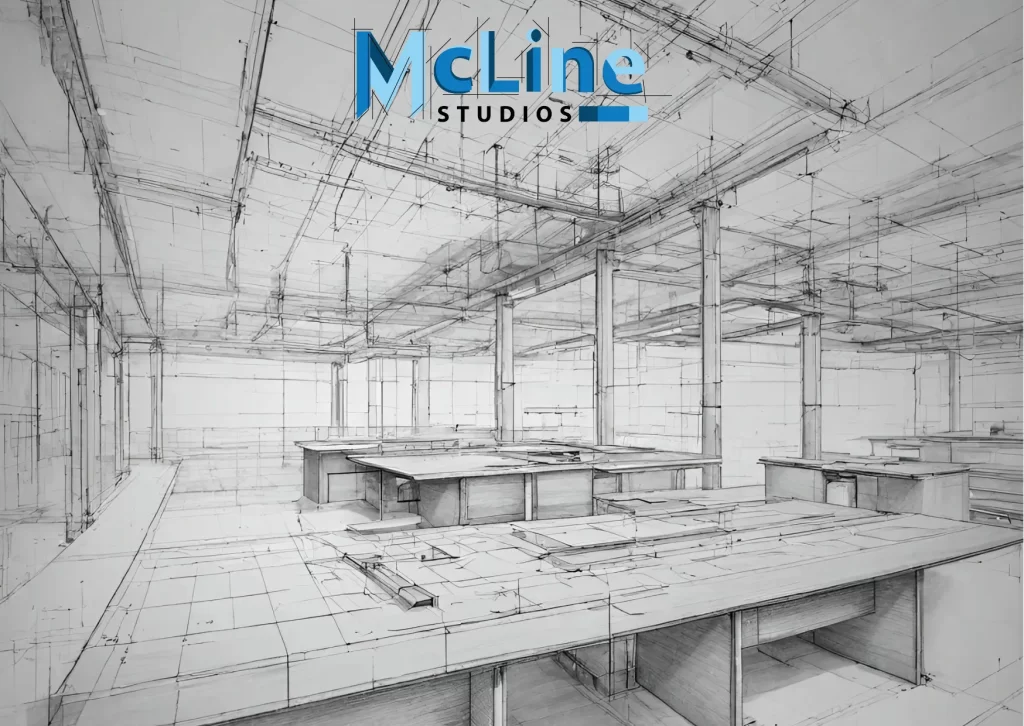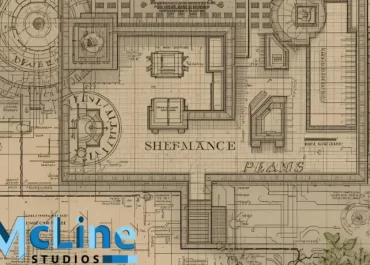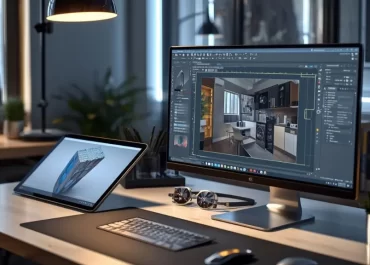Shop drawings are detailed and precise illustrations, diagrams, or plans created by architects, engineers, or contractors to communicate the design and construction specifications of a project to the contractors, fabricators, and manufacturers involved.
Unlike architectural drawings that provide a broad overview, shop drawings delve into the specific details and dimensions required to fabricate and install components such as structural elements, building systems, or custom-made products.
These drawings bridge the design concept and the actual construction process, offering a practical and technical representation of how the project will be executed. Shop drawings include information about materials, dimensions, finishes, tolerances, and other critical details, allowing contractors and fabricators to understand and implement the design accurately. They are essential in ensuring that the final built structure aligns with the architect’s vision and meets the project’s requirements.
Shop drawings are crucial in complex construction projects, particularly those involving customized components or intricate detailing. Their accuracy and clarity contribute to efficient collaboration among various stakeholders, minimizing errors, reducing delays, and ultimately enhancing the overall quality and precision of the construction process.

Importance of Shop Drawings
Shop drawings are crucial in the construction and manufacturing industries for several reasons. Here are some key aspects highlighting their importance:
- Detailed Representation: Shop drawings provide a detailed representation of the design and specifications of a construction project or a manufactured product. They offer a more granular view compared to the general plans and drawings, showing specific dimensions, materials, and construction details.
- Communication and Coordination: Shop drawings serve as a means of communication between different parties involved in a project, such as architects, engineers, contractors, and fabricators. They help in coordinating various aspects of the project and ensure that everyone is on the same page regarding the design intent and requirements.
- Verification of Design Intent: Shop drawings allow for a thorough review and verification of the design intent. They help identify any discrepancies or issues that may arise during the construction or manufacturing process, allowing for corrections before work begins.
- Fabrication Guidance: For manufacturing projects, shop drawings are essential as they provide detailed guidance for fabricators. These drawings include information about materials, dimensions, tolerances, and assembly instructions, ensuring that the final product matches the design specifications.
- Quality Control: Shop drawings play a vital role in quality control by serving as a reference for the expected quality and standards of the final product. They help identify any deviations from the original design and ensure that the finished work meets the required standards and specifications.
- Regulatory Compliance: Shop drawings are often required to comply with local building codes, regulations, and industry standards. They demonstrate that the proposed construction or manufacturing methods meet the necessary safety and quality requirements.
- Clash Detection: In construction projects, shop drawings are used for clash detection. This involves identifying and resolving any conflicts or clashes between different building components, systems, or installations before they become issues during construction.
Different types of Shop Drawings
Shop drawings are detailed construction and fabrication drawings that provide specific information about how various components of a structure or product are to be manufactured, assembled, and installed. The types of shop drawings can vary depending on the industry and the specific project requirements. Here are some common types of shop drawings:
- Architectural Shop Drawings: These drawings provide detailed information about architectural components such as doors, windows, stairs, and other architectural features. They help ensure that these elements are fabricated and installed according to the design specifications.
- Structural Shop Drawings: These drawings focus on the structural components of a building or structure. This may include details about steel or concrete elements such as beams, columns, trusses, and connections. Structural shop drawings are crucial for ensuring the structural integrity of the project.
- Mechanical Shop Drawings: These drawings detail the fabrication and installation of mechanical systems, such as HVAC (heating, ventilation, and air conditioning) ductwork, plumbing systems, and other mechanical components within a building.
- Electrical Shop Drawings: Electrical shop drawings provide information about the layout and installation of electrical components, including wiring, conduits, panels, and other electrical systems. These drawings help electricians understand how to implement the electrical design.
- Millwork Shop Drawings: Millwork drawings focus on custom woodwork and cabinetry, providing detailed information about dimensions, materials, joinery, and finishes. This is essential for the accurate fabrication and installation of custom wood elements.
The specific types of shop drawings required for a project depend on their complexity, the materials involved, and the coordination required between different trades and disciplines. Each type of shop drawing plays a critical role in ensuring that the final construction aligns with the intended design and meets safety and quality standards.
Who should prepare Shop Drawings?

Shop drawings are detailed and specialized illustrations that provide manufacturers, contractors, and fabricators with essential information about the design and installation of various components in a construction project.
The responsibility for preparing shop drawings typically falls on the shoulders of the contractor or subcontractor hired for a particular trade, such as electrical, mechanical, or structural.
These drawings serve as a bridge between the design intent of architects and engineers and the practical execution by construction professionals.
The entity responsible for preparing shop drawings must possess a thorough understanding of the project specifications, design drawings, and applicable industry standards. It is essential to have expertise in the specific trade and a keen eye for detail to ensure that the proposed details align with the overall project requirements.
While the contractor or subcontractor is usually tasked with creating shop drawings, collaboration with other project stakeholders, such as architects and engineers, is crucial to address any discrepancies or conflicts that may arise.
This collaborative approach ensures that the final shop drawings accurately reflect the intended design, comply with building codes, and facilitate a smooth construction process. Ultimately, the preparation of shop drawings demands a combination of technical expertise, attention to detail, and effective communication among all parties involved in the construction project.
Conclusion
In conclusion, shop drawings play a pivotal role in the successful execution of construction projects, serving as the bridge between design intent and on-site implementation. These detailed and precise documents provide a roadmap for contractors, fabricators, and other stakeholders, ensuring that the final product aligns seamlessly with the architect’s vision.
Through meticulous attention to detail and collaboration among all project participants, shop drawings enhance communication, mitigate risks, and streamline the construction process. As technology continues to advance, the integration of digital tools and Building Information Modeling (BIM) further elevates the efficiency and accuracy of shop drawing creation.
If you’re looking for shop drawing services then McLine Studios is the place for you. McLine Studios is highly skilled in shop drawings with an experience of over a decade we served 1200 satisfied clients. Contact us today to start your project.




